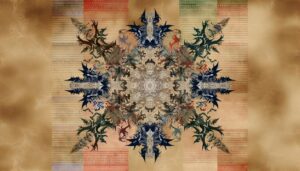How to Draw the American Indian Symbol for Love
American Indian symbols for love are deeply embedded in the cultural and spiritual practices of various indigenous tribes. These symbols often vary, such as the Navajo's intertwined arrows symbolizing mutual affection or the Cherokee's double spiral for intertwined yet distinct lives.
Artistic expressions like basket weaving, pottery, and beadwork convey familial and romantic love. Nature also plays a role, with elements like roses and wolves representing beauty and loyalty.
Modern interpretations include tattoos and fashion, reflecting both traditional values and contemporary sensibilities. To uncover the diverse meanings and contexts behind these symbols, additional exploration is essential.
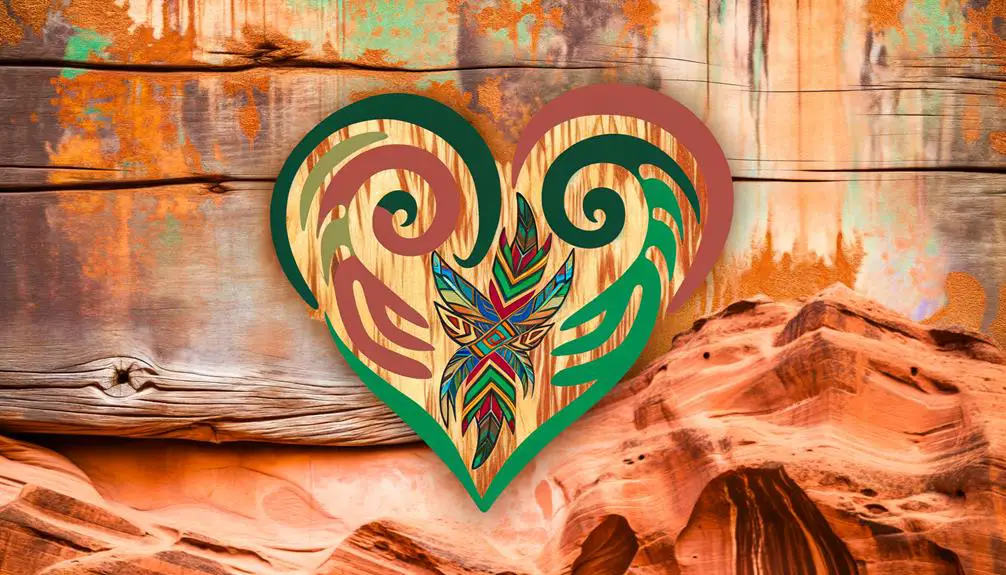
Key Takeaways
- Indigenous tribes use symbols like interconnected hearts to convey unity and harmony.
- The Navajo symbolize mutual affection with intertwined arrows.
- Cherokee use a double spiral to represent intertwined yet distinct lives.
- Hopi incorporate a butterfly to signify transformation and enduring love.
- Basket weaving, pottery, and beadwork often depict symbols of familial love and unity.
Historical Background
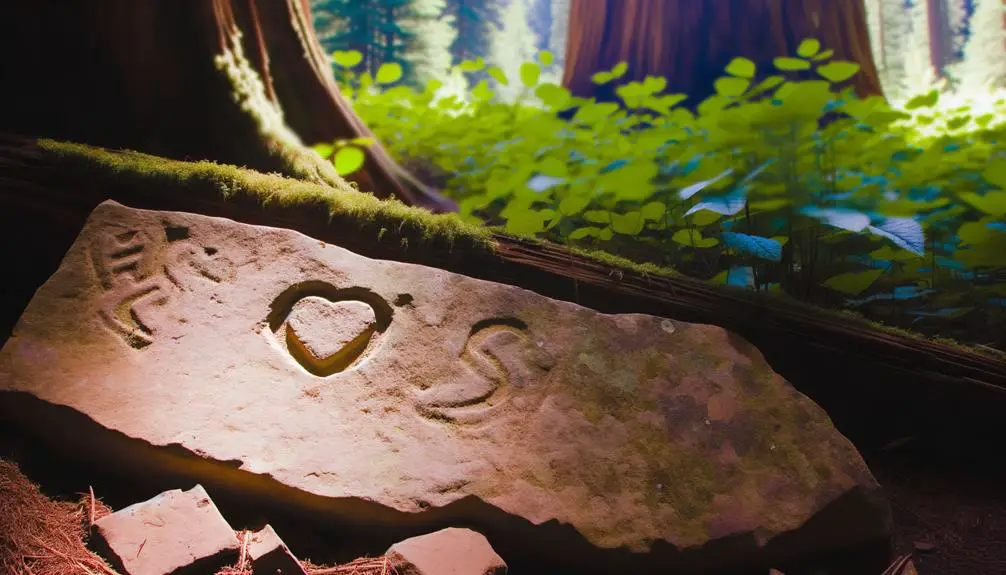
In examining the historical background of the American Indian symbol for love, it is essential to contextualize its origins within the broader tapestry of indigenous cultural and spiritual practices.
Indigenous tribes across North America have long held complex belief systems where symbols function not merely as artistic expressions but as vessels for transmitting spiritual and emotional wisdom.
The symbol for love, often depicted through motifs like interconnected hearts or knots, encapsulates themes of unity, harmony, and relational bonds.
These symbols were deeply embedded in rituals, stories, and daily life, serving as conduits for expressing profound emotional and spiritual truths.
Understanding their historical context involves recognizing the intrinsic link between symbol creation and the cultural landscapes from which they emerged.
Symbol Variations by Tribe
Delineating the variations of love symbols among different indigenous tribes reveals a rich tapestry of cultural diversity and interpretative nuance.
For example, the Navajo often use the symbol of intertwined arrows to signify mutual affection and commitment, illustrating a sense of unity and shared purpose.
In contrast, the Cherokee might employ the double spiral, representing the coexistence of two lives intertwined yet distinct, embodying both personal growth and relational harmony.
The Hopi incorporate the butterfly, symbolizing transformation and the enduring nature of love.
These variations are more than mere aesthetic differences; they reflect deeper cultural values and worldviews, highlighting how each tribe uniquely interprets and expresses the universal theme of love within their specific sociocultural contexts.
Artistic Expressions
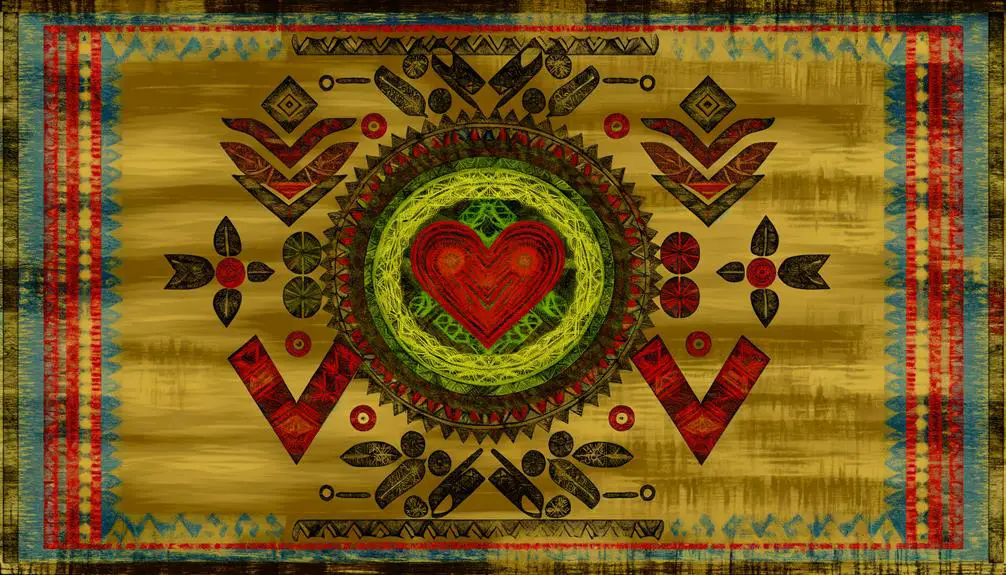
Artistic expressions of love symbols within American Indian cultures serve as profound conduits for conveying complex emotional and spiritual narratives. These symbols, often imbued with layers of meaning, are manifested through various artistic mediums, each with its distinct cultural context.
- Basket Weaving: Intricate patterns often symbolize familial love and unity.
- Pottery: Designs and motifs can represent romantic love and fertility.
- Beadwork: Elaborate bead patterns convey affection and communal bonds.
- Sand Paintings: Utilized in ceremonies, these artworks can signify spiritual love and healing.
Each form of artistic expression not only serves as a visual evidence to the depth of love but also functions as a cultural archive, preserving indigenous knowledge and emotional heritage.
These artistic creations are integral to the cultural fabric, reflecting both individual and collective identities.
Symbolism in Nature
In the domain of American Indian culture, nature is imbued with profound symbols of love. Elements such as the moon, animals, and plants embody deep-rooted expressions of affection. These natural symbols serve not only as representations of romantic love but also as reflections of community bonds, familial ties, and spiritual connections.
Understanding these elements within their cultural context reveals the integral role nature plays in articulating and perpetuating the concept of love.
Nature's Love Symbols
Throughout various Indigenous cultures, natural elements such as plants, animals, and celestial bodies are imbued with profound symbolic meanings that represent love and kinship. These symbols often serve as metaphors for the deep connections within communities and with the environment.
Analyzing these symbols reveals a rich tapestry of interpretations:
- Plants: The rose has been widely recognized as a symbol of love and beauty, embodying emotional depth and affection.
- Animals: The wolf often represents loyalty and family bonds, highlighting communal love and protection.
- Celestial Bodies: The moon is frequently seen as a symbol of feminine energy and cyclical renewal, signifying enduring love.
- Water: Rivers and lakes can symbolize the flow of emotions and the sustenance of life, mirroring love's nurturing qualities.
Understanding these symbols offers a deeper appreciation of Indigenous perspectives on love.
Elements of Affection
Exploring the intricate symbolism in nature provides valuable insights into how various elements are employed to express affection and emotional bonds within Indigenous cultures.
For example, the eagle feather often signifies loyalty and love, its lofty flight symbolizing the elevated spirit of affection.
Similarly, the willow tree, known for its flexibility and resilience, is emblematic of enduring love that bends but does not break.
The use of animal motifs, like the wolf, underscores familial love and loyalty, echoing the animal's pack mentality.
Each natural element, from flora to fauna, captures nuanced aspects of affection, reflecting a deep interconnectedness with the environment.
This symbolic lexicon enriches our understanding of love as perceived and practiced within these communities, highlighting an intrinsic harmony with nature.
Modern Interpretations
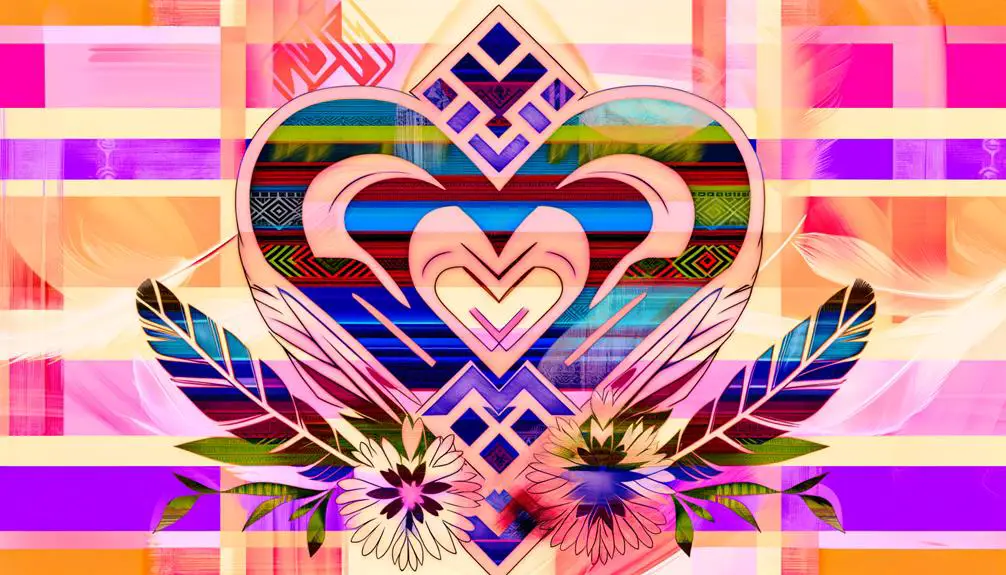
Modern interpretations of the American Indian symbol for love reveal a rich tapestry of cultural resonance and contemporary relevance. This emblem, historically rooted in indigenous communities, has evolved to embody broader meanings in today's society. Its modern applications often intersect with various aspects of life, reflecting a blend of traditional values and current sensibilities.
- Tattoo Art: Many people choose this symbol to express a deep, personal connection to love and heritage.
- Fashion: Designers incorporate the symbol in clothing and accessories, promoting cultural appreciation.
- Digital Media: Social media platforms use the symbol to spread messages of unity and affection.
- Therapeutic Practices: Counselors and therapists may utilize the symbol in healing and relationship-building exercises.
Such interpretations underscore the dynamic and enduring nature of this cultural artifact.
Preservation and Legacy
As modern interpretations continue to expand the significance of the American Indian symbol for love, it becomes essential to contemplate the strategies for preserving its authentic cultural legacy. Central to this effort is the involvement of indigenous communities, who are the custodians of these symbols.
Establishing educational initiatives that highlight the historical and cultural contexts of these symbols can foster a deeper appreciation and respect. Additionally, legal protections against cultural appropriation can safeguard the integrity of these symbols.
Digital archiving and collaboration with museums can also play pivotal roles in ensuring their longevity. Ultimately, a balanced approach that respects tradition while embracing contemporary relevance will be vital in preserving the symbol's true essence for future generations.
Conclusion
The American Indian symbol for love is a multifaceted gem of cultural and historical richness. It encapsulates the essence of human connection and affinity. Its variations across tribes, artistic manifestations, and natural symbolism create a tapestry woven with intricate meanings.
Modern interpretations breathe new life into these age-old symbols, ensuring their preservation and continued legacy. This enduring emblem, like a timeless melody, resonates through the corridors of time, echoing the profound depths of love and unity in Indigenous cultures.


